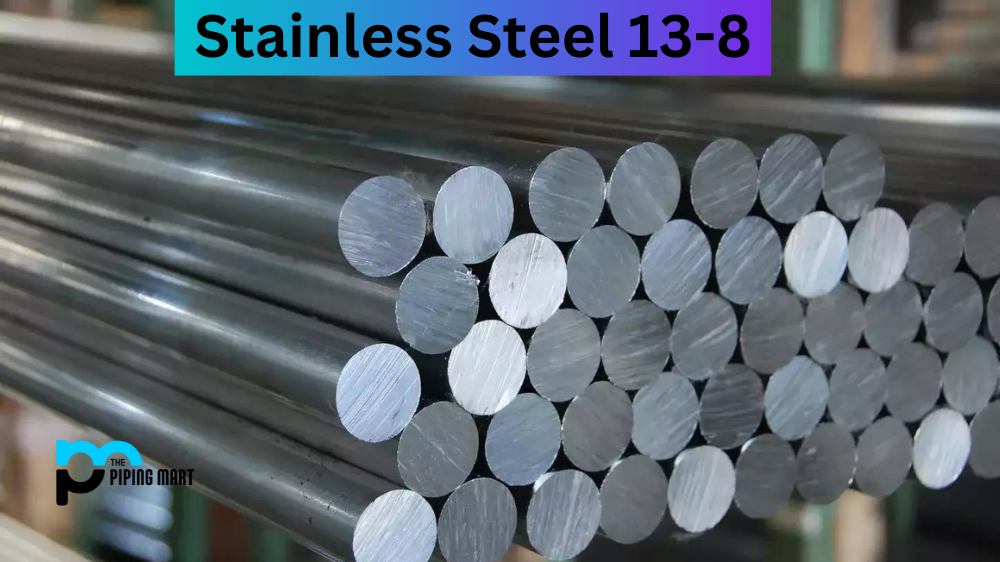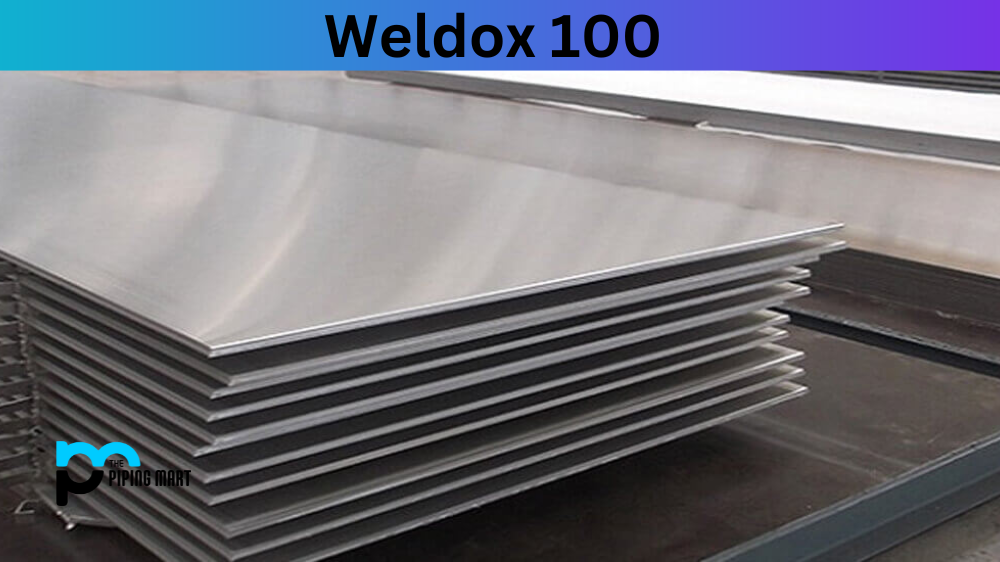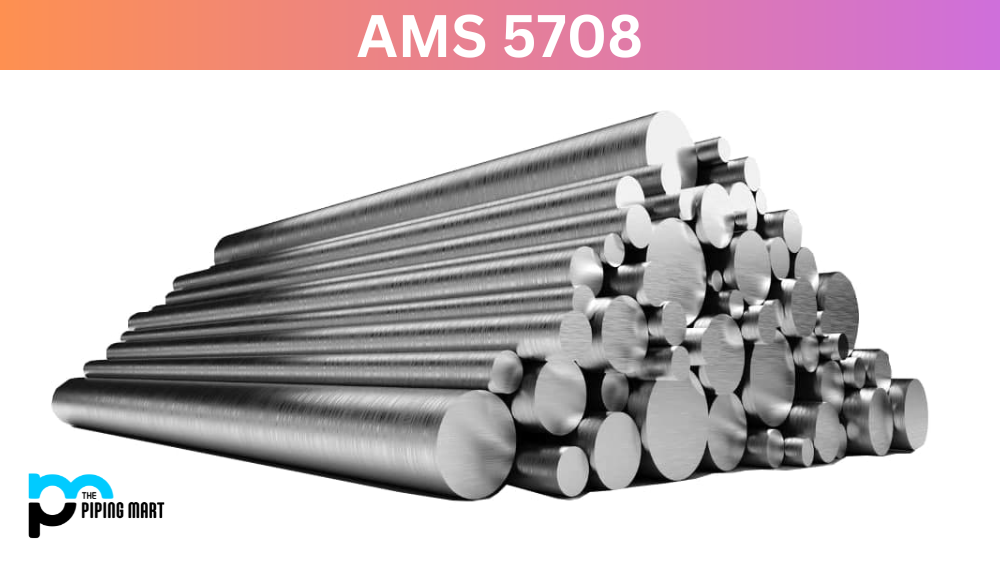This guide will explore stainless steel 13-8, its composition, mechanical and physical properties, uses corrosion resistance, heat treatment, machining, and welding.
What is 13-8 PH Stainless Steel?
Stainless steel 13-8 PH is a high-strength, corrosion-resistant, and durable alloy widely used in various industrial applications. It is a precipitation-hardening, martensitic stainless steel that contains chromium, nickel, and molybdenum, among other elements. This alloy has outstanding mechanical and physical properties, making it suitable for severe environments and high-stress applications.
13-8 PH Stainless Steel Composition
13-8 Stainless steel PH is a low-carbon, high-nickel, chromium, and molybdenum alloy that contains 8% nickel, 13% chromium, and 2% molybdenum. It also contains small amounts of manganese, silicon, sulfur, phosphorus, and nitrogen. The controlled addition of aluminium, which reacts with nitrogen during heat treatment, enhances the strength and toughness of this alloy.
| Symbol | Element | Min % | Max % |
|---|---|---|---|
| C | Carbon | 0.05% | |
| Mn | Manganese | 0.10% | |
| Si | Silicon | 0.10% | |
| P | Phosphorus | 0.010% | |
| S | Sulfur | 0.008% | |
| Cr | Chromium | 12.25% | 13.25% |
| Ni | Nickel | 7.50% | 8.50% |
| Mo | Molybdenum | 2.00% | 2.50% |
| N | Nitrogen | 0.010% | |
| Al | Aluminum | 0.90% | 1.35% |
| Fe | Iron | Balance |
13-8 PH Stainless Steel Mechanical Properties
13-8 PH Stainless steel has excellent mechanical properties, including high tensile and yield strength at room and elevated temperatures, toughness, and fatigue resistance. Its ultimate tensile strength is 185 ksi, and its yield strength is 175 ksi, making it suitable for high-stress applications such as aerospace, defence, and power generation.
| Condition | Tensile | Yield 0.2% offset | Elongation (%in 2″) | Reduction of Area | Brinell Hardness | Rockwell Hardness |
|---|---|---|---|---|---|---|
| Ann | 175 ksi max | 363 max | ||||
| H950 | 220 ksi | 205 ksi | 10% | 45% | C45 min | |
| H1000 | 205 ksi | 190 ksi | 10% | 50% | C45 min | |
| H1025 | 185 ksi | 175 ksi | 11% | 50% | ||
| H1050 | 175 ksi | 165 ksi | 12% | 50% | C40 min | |
| H1100 | 150 ksi | 135 ksi | 14% | 50% | C34 min | |
| H1150 | 135 ksi | 90 ksi | 14% | 50% | C30 min |
13-8 PH Stainless Steel Physical properties
13-8 PH Stainless steel has a density of 0.28 lb/in3, a melting point of 2,560°F-2,590°F, and a specific heat capacity of 0.12 Btu/lb°F. Its thermal conductivity is 8 Btu-ft/hr/ft2/°F, lower than other metals such as copper and aluminium. However, its high strength and corrosion resistance make it an excellent choice for harsh environments.
| Properties | Metric | Imperial |
|---|---|---|
| Density | 7.80 g/cm3 | 0.282 lb/in³ |
13-8 PH Stainless Steel Equivalents
- AISI 632
- AMS 5629
- AMS 5864
- ASTM A564 (XM-13)
- ASTM A693 (XM-13)
- ASTM A705 (XM-13)
- DIN 1.4534
13-8 PH Stainless Steel Thermal Properties
| Properties | Metric | Imperial |
|---|---|---|
| Thermal expansion co-efficient (@21-95°C/69.8-203°F) | 10.6 µm/m°C | 5.89 µin/in°F |
| Thermal conductivity (in condition A, @100°C/212°F) | 14.0 W/mK | 97.2 BTU in/hr.ft².°F |
13-8 PH Stainless Steel Uses
13-8 PH Stainless steel finds application in various industries, including aerospace, defence, medical, and petrochemical. Its high strength, excellent fatigue resistance, and resistance to stress corrosion cracking make it ideal for aircraft components, turbine blades, missile parts, and rocket motor cases. It is also used in surgical implants, chemical processing equipment, and pressure vessels.
13-8 PH Stainless Steel Corrosion Resistance
13-8 PH Stainless steel is highly resistant to corrosion, oxidation, and pitting in natural and high chloride environments. Its high nickel and chromium content and adding molybdenum and aluminium enhance its corrosion resistance. It is also resistant to stress corrosion cracking, a common issue with many other alloys.
13-8 PH Stainless Steel Heat treatment
13-8 PH Stainless steel can be heat-treated to enhance its mechanical properties further. The most common heat treatment process involves solution annealing followed by precipitation hardening. During solution annealing, the material is heated to a temperature of 1900°F- 1950°F for 30 minutes and then cooled rapidly. During precipitation hardening, the material is aged at a lower temperature of 900°F-1150°F for several hours to allow the precipitation of intermetallic phases, increasing the material’s strength and hardness.
13-8 PH Stainless Steel Machining
13-8 PH Stainless steel can be challenging due to its high strength and hardness. However, it can be machined using conventional turning, drilling, and milling methods, provided the cutting tools are sharp and properly lubricated. Low cutting speeds and coolants are also recommended to reduce heat generation and prolong tool life.
13-8 PH Stainless Steel Welding
Welding of stainless steel 13-8 can be challenging due to its high strength and susceptibility to cracking. It is recommended to use gas tungsten arc welding (GTAW), gas metal arc welding (GMAW), or submerged arc welding (SAW). Before welding, the material should be solution annealed and cooled to avoid distortion.
Conclusion:
13-8 PH Stainless steel is a high-strength, corrosion-resistant, and durable alloy that finds application in various industries due to its unique mechanical and physical properties. Its composition, excellent corrosion resistance, and heat treatability make it an ideal choice for harsh environments and high-stress applications. Understanding this alloy’s properties, uses, and heat treatment can help fabricators and engineers choose the right material for their applications and ensure the best performance and durability.





